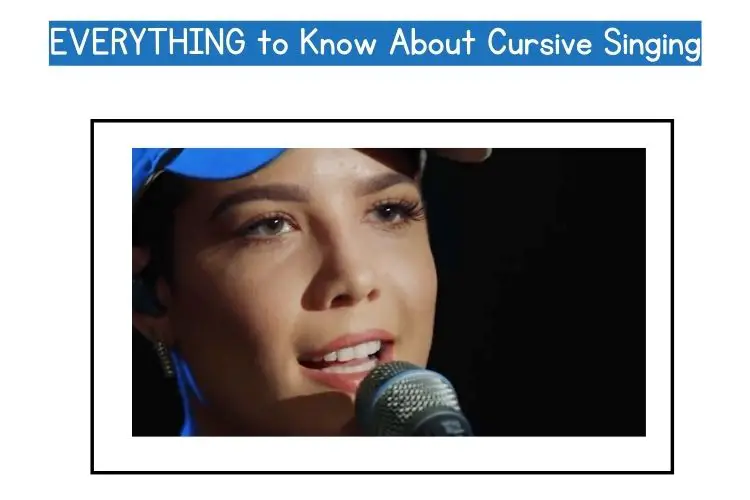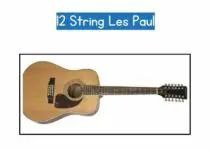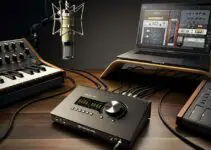As music continues to evolve, singers, players, and engineers continue to invent and re-invent new singing/playing techniques and also new technology. Sometimes this is just for the mere reason of standing and differentiating themselves from the rest.
The incorporation of different techniques and styles into singing is not exactly a new thing. Over the years, we have noticed different approaches to both singing and lyricism by singers and performers.
Sometimes, we receive these new approaches and techniques well, other times, not so well. However, regardless of how receptive we are to these new styles and innovations, somehow it always finds a way to stand, regardless.
This is the case with a fairly new singing technique and style known as cursive singing. Don’t get it wrong, cursive singing is not the excessive use of curse words while singing. Considering when it started popping up, we can say that cursive singing is a pretty new term.
The term and technique just started popping up within the last decade of music. Cursive singing is a combination of different singing techniques like the unnecessary stretching of vowel sounds while singing, vocal fry, breathy singing, and many other techniques.
It is a stylistic approach to singing employed by some singers in their performance just to enhance their sound with long (and sometimes strange) vowels, vocal fry, poor diction, and sliding of notes.
Table of Contents
History of Cursive Singing – How it All Began
The history of cursive singing can be traced back to the late 2000s when a Twitter user named @TRACKDROPPA first coined it in 2009.
The term “cursive singing” describes a distinct vocal style characterized by diphthongization, wherein vowel sounds are stretched beyond what is necessary.
This style was particularly associated with artists like Corinne Bailey Rae and Amy Winehouse, who combined jazz and vocal fry elements in their music, creating a nostalgic yet modern sound.
The style became iconic and influenced a new generation of singers, solidifying its place in pop music. During the 90s and early 2000s, singers such as Macy Gray, Diana Vickers, and Corinne Bailey Rae used cursive singing elements in their performances.
Their jazzy improvisations included note slides and peculiar vowel sounds, which gave their vocals a unique and somewhat lazy effect. However, the term “cursive singing” wasn’t officially recognized then.
As time passed, social media platforms like Twitter and Instagram played a role in further popularizing the term. Singers like SZA and Khalid were often described as “singing in cursive” by fans on these platforms, referring to their relaxed and dramatized vocal style.
In more recent years, TikTok, the popular video-sharing platform, has contributed to the rise of cursive singing as a trend. TikTok content creators noticed the increasing popularity of cursive singing, especially in rising pop music.
As a result, more artists started embracing this style, which became a defining characteristic of the current music era. Some well-known artists associated with cursive singing include Corinne Bailey Rae, Amy Winehouse, Sia, Lorde, Shawn Mendes, and Billie Eilish, among others.
These artists and those mentioned earlier have contributed to the development and fame of cursive singing as a distinct vocal approach in the music industry.
What Does Cursive Singing Sound Like?
The term “cursive singing” was initially used sporadically to describe singers who sounded drunk or whose lyrics were challenging to comprehend. Over time, it evolved to refer to a specific singing style characterized by the aforementioned vocal techniques.
One of the key aspects of cursive singing is the elongation of vowel sounds. Vowels are stretched beyond their typical duration, giving the vocal performance a unique and distinct quality. This can add emotion, texture, and character to the singing, creating a more expressive and immersive experience for the listener.
Additionally, cursive singing often incorporates note sliding, where the singer glides between different pitches rather than hitting each note precisely. This sliding effect contributes to the laid-back and smooth atmosphere associated with this style.
Vocal fry, a technique where the singer produces a low and creaky sound, is another characteristic of cursive singing. It can be used to add depth and richness to certain phrases or notes, enhancing the overall expressiveness of the performance.
In terms of intonation, cursive singing can utilize a wide range of pitch variations to convey emotions and meanings. The singer might experiment with subtle variations in pitch, playing with rises and falls to create different shades of expression.
Intonation is an essential element in conveying the intended mood and atmosphere of the song. Overall, cursive singing offers a fresh and creative approach to vocal performance, allowing singers to infuse their music with emotion, authenticity, and a touch of artistry.
How to sing in cursive?
To sing in cursive, singers employ a stylistic approach that involves various vocal techniques to enhance their sound. Here are some different techniques that singers can use to sing in cursive:
1. Long and Unusual Vowels
Singers in cursive singing deliberately lengthen the pronunciation of certain words, stretching the vowels beyond their typical duration. This elongation adds a unique and expressive quality to the vocals.
2. Vocal Fry
Cursive singing often incorporates vocal fry, a low and creaky sound produced by the vocal cords. This technique can add depth and texture to the singing, contributing to the overall style.
3. Lack of Diction
In cursive singing, singers may intentionally reduce the clarity of their diction. This lack of precise articulation can create a more laid-back and relaxed vocal delivery.
4. Note Sliding
Sliding between different pitches rather than hitting each note precisely is a characteristic technique in cursive singing. Note sliding can add a sense of fluidity and emotive expression to the performance.
5. Emphasis on Expressiveness
Singing in cursive often focuses on emotional expression and conveying the song’s mood. Singers may use pitch variations and vocal techniques to create a more evocative and engaging performance.
6. Diphthongisation
Cursive singing is characterized by diphthongization, where vowel sounds are stretched beyond what is normally required. This technique adds a unique flavour to the vocals, making them stand out from conventional singing styles.
7. Imitating Cursive Singers
Aspiring singers can learn cursive singing by studying and imitating artists who are known for this style. Listening to cursive singers and observing their vocal techniques can help one understand and incorporate this style’s nuances into one’s singing.
8. Consulting Vocal Coach
Seeking guidance from an experienced vocal coach can be beneficial for mastering cursive singing. A vocal coach can provide personalized feedback, help refine vocal techniques, and suggest improving cursive singing skills.
It’s important to note that cursive singing should be approached with care, and singers should aim to balance these techniques. Overusing cursive singing or neglecting proper vocal training and control may lead to vocal strain and affect the overall vocal performance.
As with any vocal style, practice, and careful execution are key to achieving a captivating and expressive cursive singing performance.
Popular Singers Who Sing in Cursive
Popular singers known for their cursive singing style include:
1. Macy Gray: Macy Gray is recognized for using cursive singing techniques in some of her songs, incorporating note slides and strange vowels to create a unique vocal style.
2. Diana Vickers: Diana Vickers is another singer known for her cursive singing approach. She incorporates vocal fry, note sliding, and jazzy improvisations, giving her vocals a distinctive and laid-back effect.
3. Corinne Bailey Rae: Corinne Bailey Rae is recognized as one of the early adopters of cursive singing. Her vocal style involves elements of jazz and vocal fry, contributing to the charm of her performances.
4. Amy Winehouse: Amy Winehouse is considered one of the originators of cursive singing. Her nostalgic yet modern combination of jazz and vocal fry influenced the late 2000s music scene and inspired contemporary artists in the cursive singing style.
5. Sia: Sia’s vocals often incorporate cursive singing elements, including vocal fry and distinct vowel choices, giving her performances a unique and dynamic quality.
6. Lorde: Lorde is known for her indie-pop voice, which includes aspects of cursive singing, such as diphthongization and vowel stretching
7. Halsey: Halsey is known for singing in cursive during her live performances and has been discussed a lot on the internet.
Why Do Singers Sing in Cursive?
Singers may choose to sing in cursive for various reasons, as it allows them to explore creative expression, showcase their technical skills, and experiment with their musical style. Here are some expanded explanations for why singers embrace cursive singing:
1. Creative Expression: Singing in cursive gives artists a unique platform to express themselves creatively. By stretching and manipulating vowel sounds, incorporating vocal fry, and experimenting with note slides, singers can convey emotions and feelings in a way that conventional singing might not achieve.
2. Stylistic Approach: Cursive singing has evolved into a recognized stylistic approach in modern music. It fits well within genres like indie pop, alternative, and certain sub-genres of contemporary music, where its laid-back, mellow, and somewhat dreamy qualities are appreciated. Singers who adopt this style often align themselves with the aesthetics and vibes associated with these genres.
3. Display of Technical Skills: Singing in cursive requires a certain level of vocal control and technique. By elongating vowels and blending diphthongs, singers demonstrate their proficiency and mastery of their vocal instrument.
4. Experimentation: Singers, especially those in the early stages of their careers or those seeking to reinvent their musical identity, may explore cursive singing as a form of experimentation. It allows them to push boundaries, step outside their comfort zones, and discover new ways to convey emotions and connect with their audience.
5. Trend Riding: As with any artistic field, trends come and go in music. Cursive singing gained popularity through social media platforms like TikTok, where parodies and imitations of the style became viral. For some singers, adopting cursive singing might be a strategic move to ride the wave of a prevailing trend and gain attention from a wider audience.
Pros and Cons of Cursive Singing
| Pros | Cons |
| Unique and memorable vocal style. | Reduced clarity in lyrics and diction. |
| Allows for creative expression and experimentation. | Limited genre suitability for some music styles. |
| Demonstrates technical vocal skills. | Not preferred by all listeners, potentially divisive. |
| Versatility in adapting to various genres. | Risk of vocal strain and misuse without proper training. |
| Can capitalize on trending and viral appeal. | May become an overused trope, lacking originality. |
| Cursive singing is not the most liked form or respected style of singing on the internet |
Conclusion
Cursive singing is a much-discussed and controversial topic on the internet that everyone has different opinions on. Some artists use it as a creative expression, and it has slowly made its place in Indie, R&B, Jazz, and other musical genres.
The aesthetic and tone attached to it is one of a kind. As a singer, you can adapt to it for songs that cannot be expressed the same way by any other style. However, singing is not easy as it requires much control, precision, and technique.
While cursive singing offers a unique and memorable vocal style, it may also need help regarding reduced lyrical clarity and genre suitability. Ultimately, whether embraced or criticized, cursive singing stands as a distinct and evolving approach to vocal performance in the ever-changing landscape of music.
I hope the article helps. Thank you for reading.



![Fender Super Champ x2 vs. Blues Jr [Tones, Features, Versatality, etc..]](https://performerlife.com/wp-content/uploads/2022/09/fender-super-champ-x2-vs-blues-jr-211x150.jpg)

